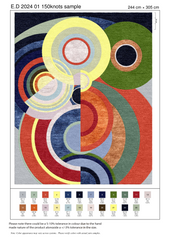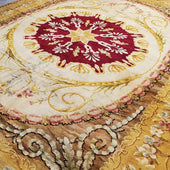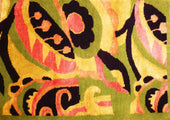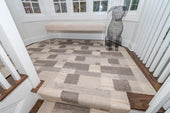What Makes Modern Design Handmade Carpets and Rugs Unique
Introduction
Modern design handmade carpets and Rugs are distinguished by a blend of contemporary aesthetics and time-honored craftsmanship. Understanding how to classify these carpets and Rugs require a comprehensive approach that considers factors such as design patterns, materials, weaving techniques, and origin. Here is a detailed look at the various criteria used to classify modern handmade carpets.
Design and Patterns
Modern design handmade carpets and rugs are primarily classified based on their visual appeal and patterns. The design of these carpets often emphasizes simplicity, minimalism, and abstraction. Unlike traditional carpets and Rugs, which are usually adorned with intricate motifs and detailed patterns, modern carpets favor geometric shapes, abstract art, and a clean, bold color palette. Some may also incorporate asymmetrical designs or organic, free-flowing patterns inspired by nature. Designers often experiment with negative space and focus on achieving a balance between form and function to create a statement piece that complements contemporary interiors.
Color Palette
Color plays a significant role in classifying modern handmade carpets. These carpets and rugs typically feature neutral tones, such as whites, grays, and beiges, which blend seamlessly with modern décor. However, vibrant colors like teal, mustard yellow, and deep navy blue may be used to add a pop of color. The choice of color often depends on the intended impact of the carpet within a space, whether it’s meant to serve as a subtle accent or a bold focal point. Additionally, modern designs may incorporate gradients or Ombre effects, emphasizing color transitions to create a sense of movement and depth.
Materials and Textures
Another essential criterion for classifying modern handmade carpets is the choice of materials. Natural fibers such as wool, silk, cotton, are commonly used due to their durability and luxurious feel. Wool is particularly favored for its resilience and ability to retain dyes, making it suitable for bold, striking designs. In some cases, silk is used to add a subtle sheen and enhance the tactile experience of the carpet. Modern carpets and rugs may also feature a mix of textures, such as a combination of high and low pile, to create depth and dimension.
Weaving Techniques
The craftsmanship and weaving techniques used in creating these carpets and rugs are crucial for classification. Hand-knotting is a common method, where artisans meticulously tie individual knots to a base structure. The density of knots per square inch (KPSI) is a key indicator of the quality and intricacy of the design; higher knot counts generally signify a more detailed and durable carpet. However, this is only true in some cases. Other techniques include hand-tufting and flat-weaving. Hand-tufted carpets are quicker to produce and less expensive but they don't have the durability of hand knotted rugs and carpets, while flat-weave carpets, such as Kilims and Dhurries, are reversible and known for their casual elegance.
Cultural and Regional Influence
The origin of the design inspiration also plays a role in classification. While modern handmade carpets are often created with a global audience in mind, some designs may draw influences from specific cultures. For example, Scandinavian influences may feature clean lines and a neutral color scheme like the Mid-Century Swedish Flat Weave Rugs, while Japanese-inspired designs may emphasize simplicity, harmony, and natural elements. These cultural touches can subtly influence the overall look and feel of the carpet.
Sustainability and Ethical Practices
Lastly, modern handmade carpets are increasingly being classified based on sustainability and ethical craftsmanship. As consumers become more environmentally conscious, carpets made using eco-friendly processes and fair labor practices are gaining prominence. Natural dyes, organic materials, and fair-trade certifications are factors that influence the classification of these carpets, emphasizing the importance of responsible consumerism in the modern design world.









